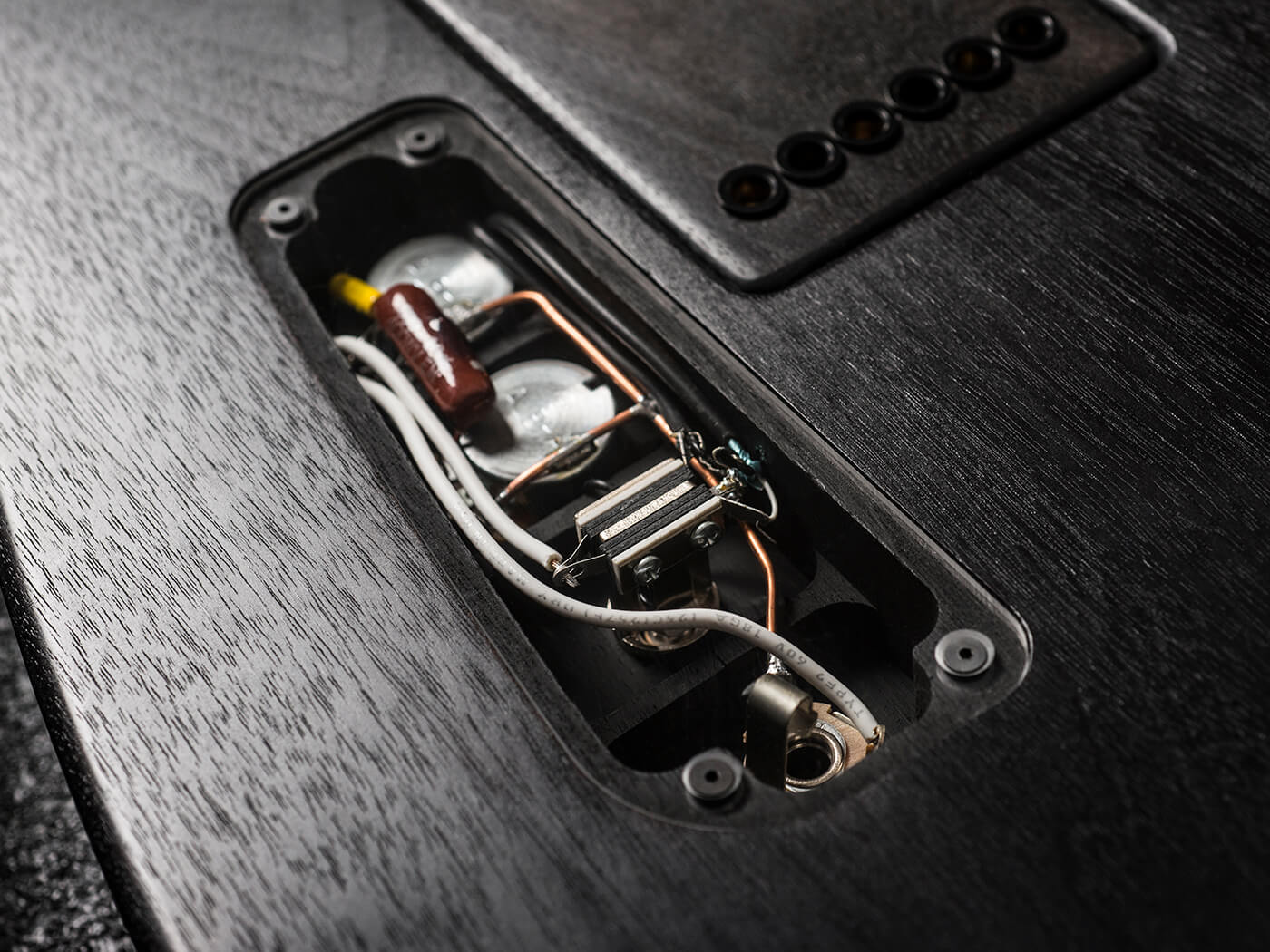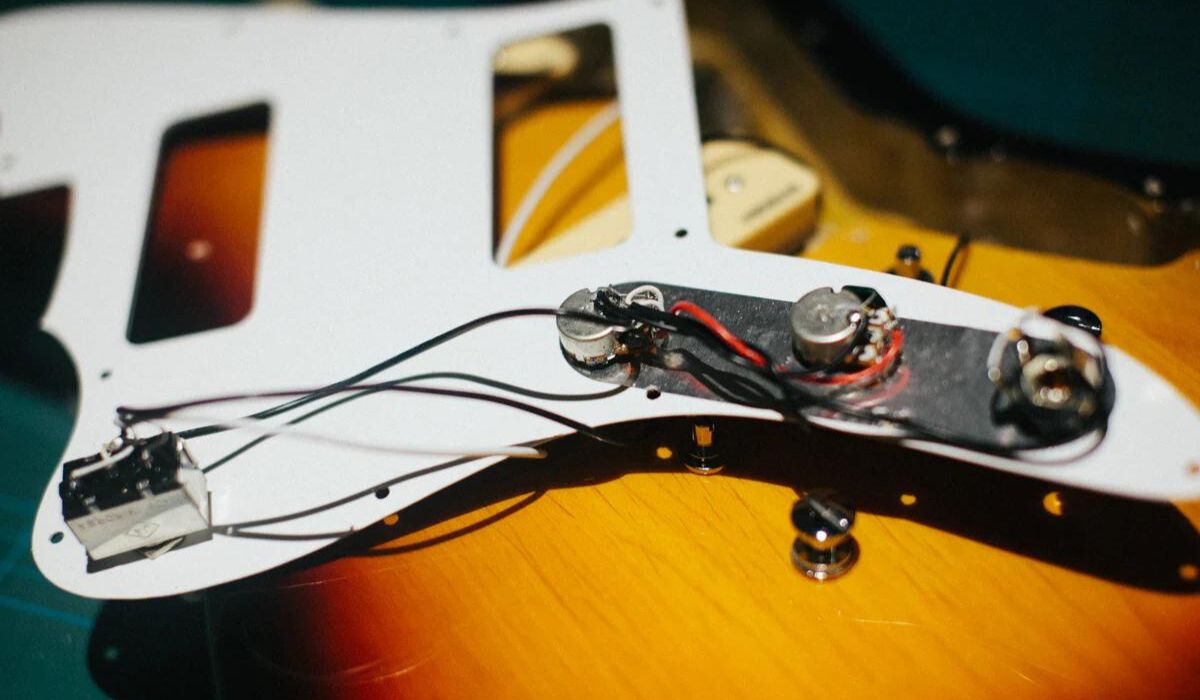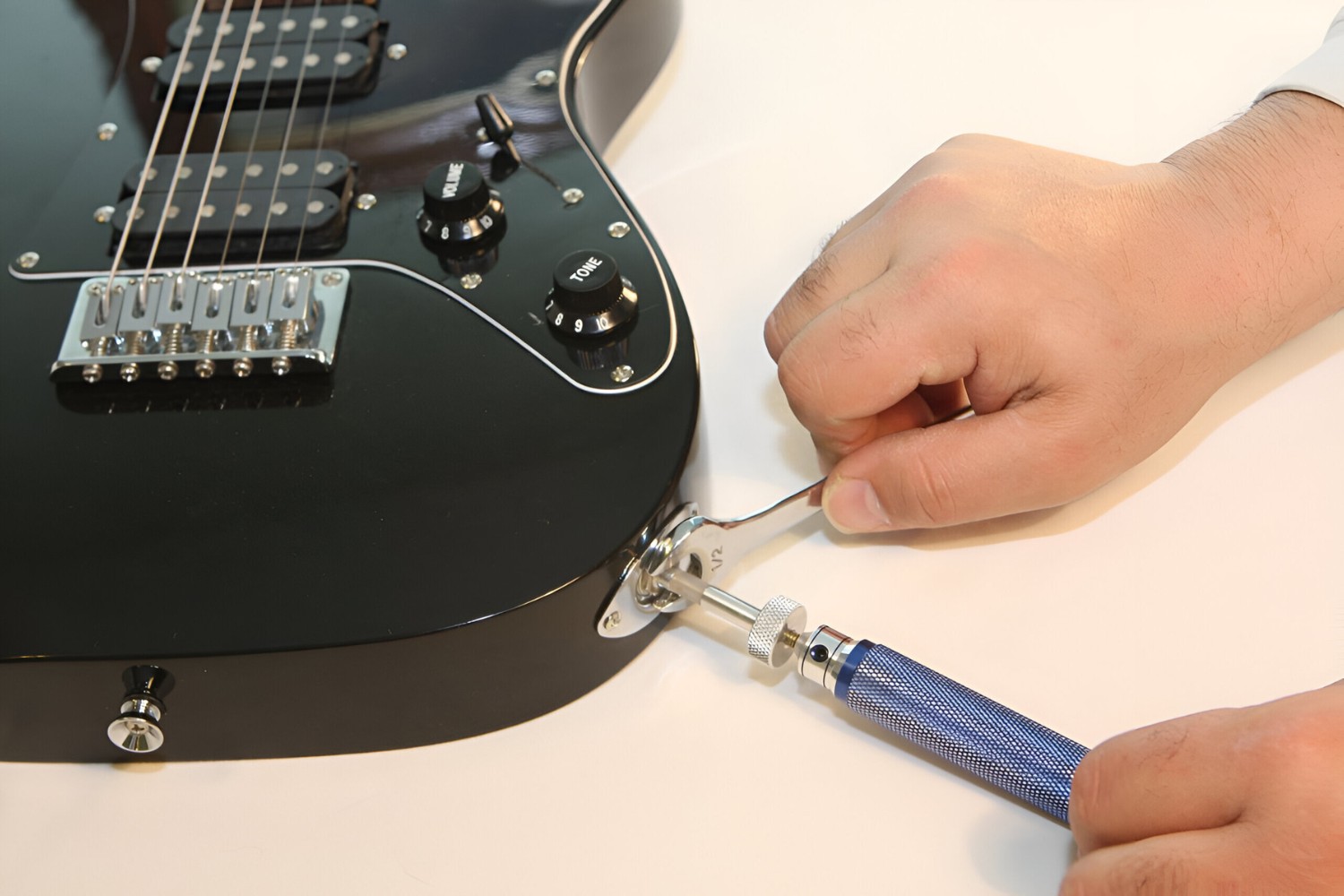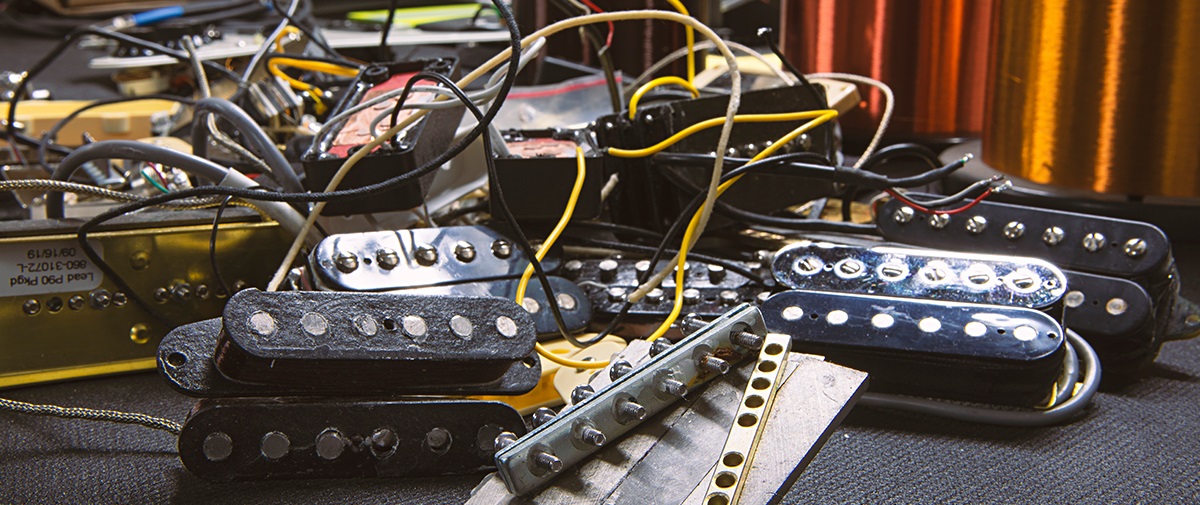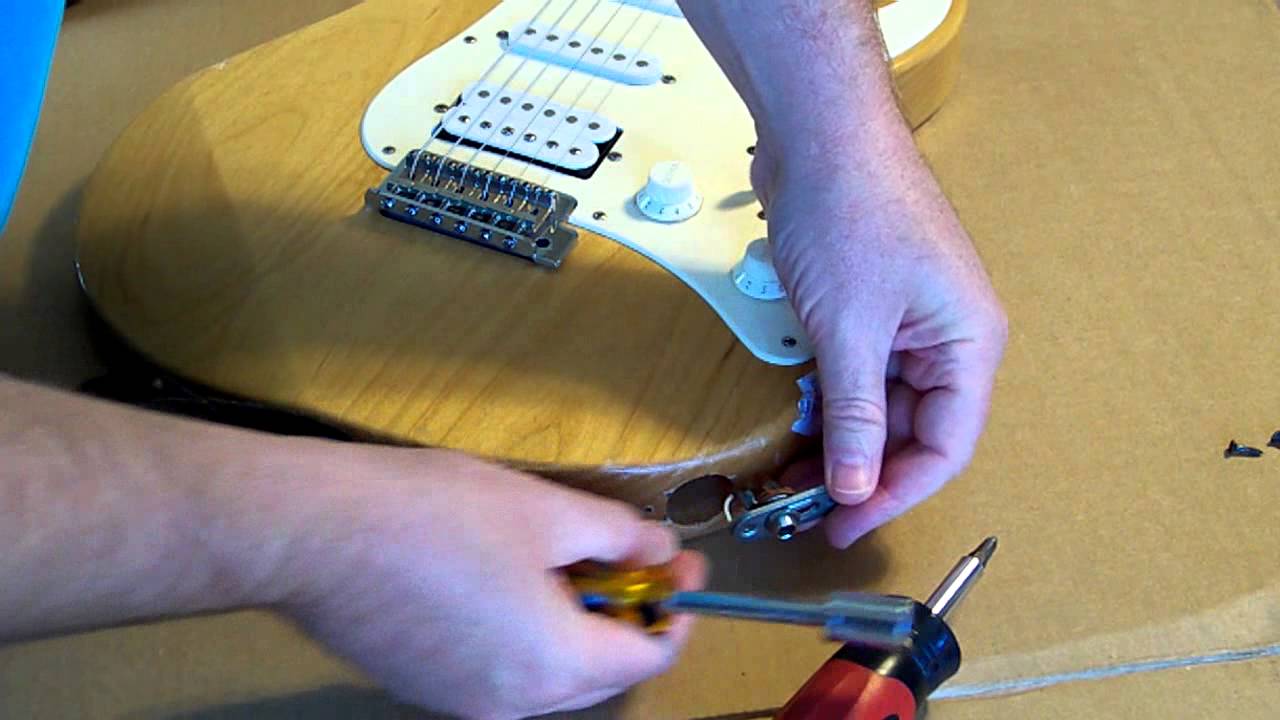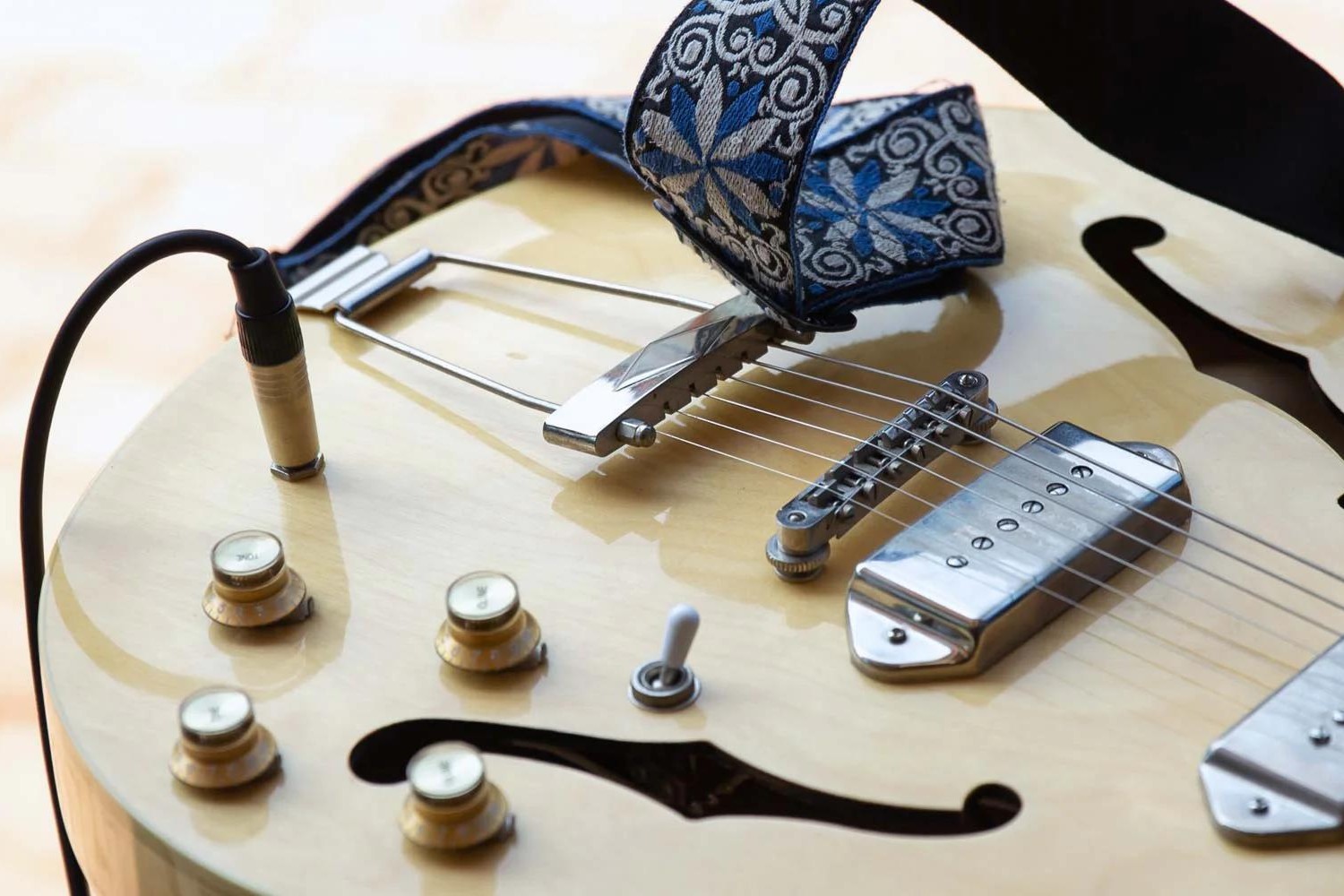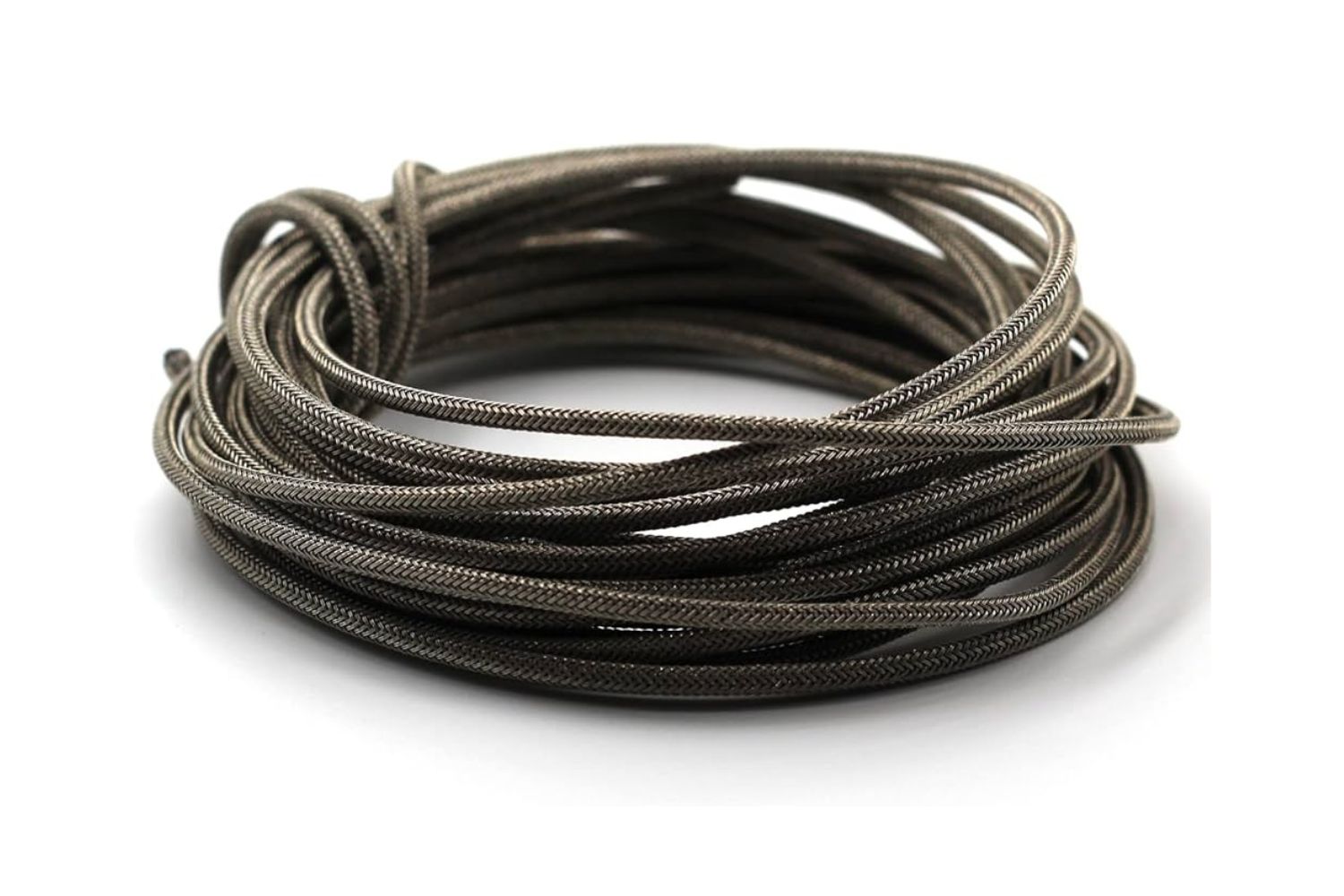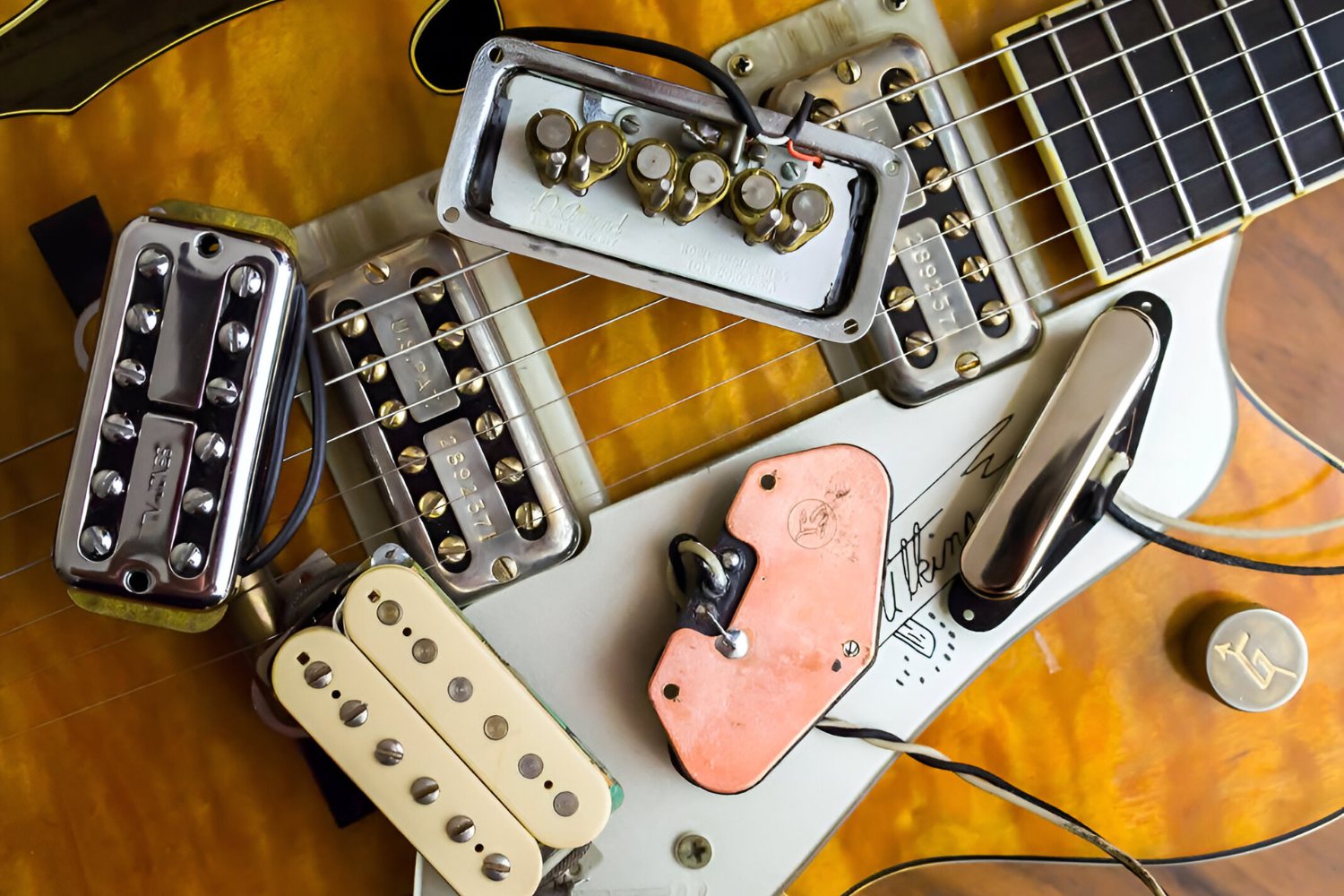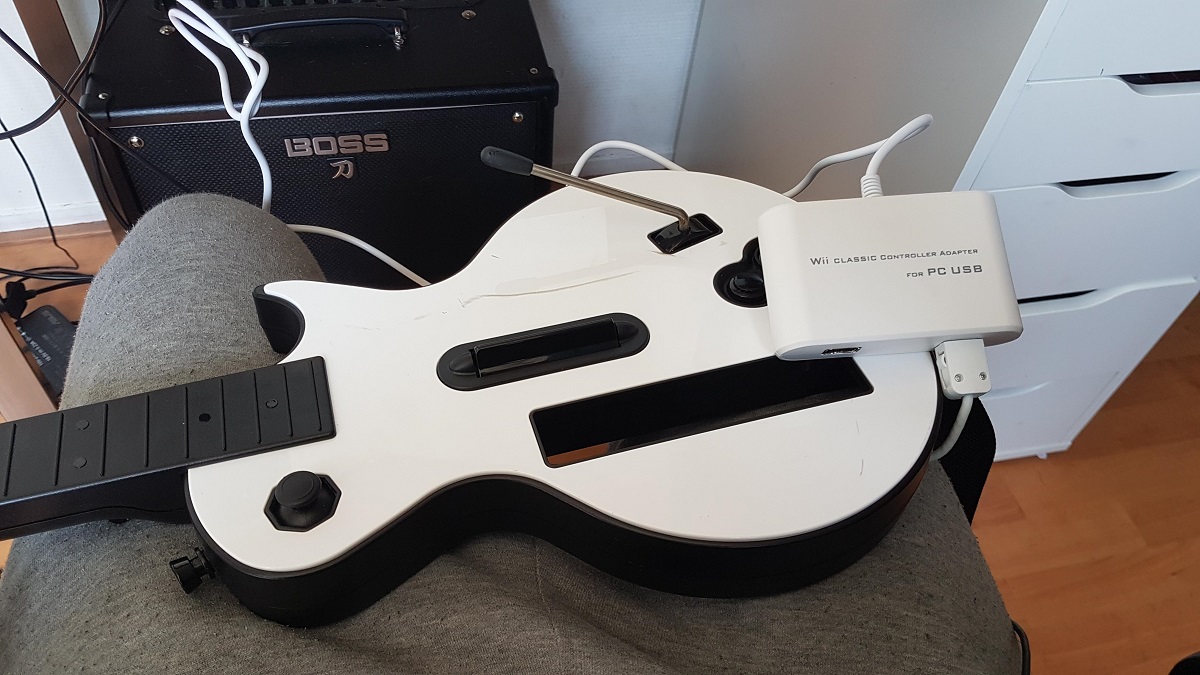Introduction
Welcome to the fascinating world of electric guitars! These iconic instruments have played a pivotal role in shaping the landscape of modern music, captivating audiences with their electrifying sound and versatility. At the heart of an electric guitar's sonic prowess lies its intricate wiring system, which forms the backbone of its tonal capabilities. In this comprehensive guide, we will delve into the inner workings of electric guitar wiring, shedding light on the components, circuits, and configurations that contribute to the instrument's distinctive sound.
Unraveling the mysteries of electric guitar wiring is akin to embarking on a journey through a labyrinth of wires, switches, and electronic components, each playing a crucial role in shaping the instrument's tonal palette. Whether you're a seasoned guitarist looking to customize your instrument's sound or a curious enthusiast eager to understand the wizardry behind these musical marvels, this guide will equip you with the knowledge to navigate the intricate world of electric guitar wiring.
From the mesmerizing hum of single-coil pickups to the thunderous roar of dual humbuckers, the wiring of an electric guitar serves as the conduit through which musical expression flows. By unraveling the complexities of this wiring, we can gain a deeper appreciation for the artistry and engineering that underpin the instrument's sonic capabilities. Join us as we embark on an illuminating exploration of the wiring intricacies that empower electric guitars to sing, scream, and serenade with unparalleled charisma and emotion.
Components of an Electric Guitar
Before delving into the intricacies of electric guitar wiring, it’s essential to familiarize ourselves with the fundamental components that constitute these iconic instruments. At its core, an electric guitar comprises several key elements that collectively contribute to its sonic character and playability.
Body: The body of an electric guitar serves as the foundational platform upon which all other components are mounted. It not only provides structural support but also significantly influences the instrument’s resonance, sustain, and aesthetic appeal. Electric guitar bodies come in various shapes, such as the classic Stratocaster, timeless Les Paul, and sleek Superstrat designs, each offering distinct tonal and ergonomic attributes.
Neck and Fretboard: The neck of an electric guitar houses the fretboard, frets, and tuning pegs, playing a pivotal role in determining playability and intonation. The choice of neck profile, scale length, and fretboard material profoundly impacts the instrument’s feel and response, catering to a diverse range of playing styles and preferences.
Pickups: Among the most influential components of an electric guitar are the pickups, which capture string vibrations and convert them into electrical signals. Common types include single-coil and humbucker pickups, each imparting distinct tonal characteristics. These magnetic transducers are strategically positioned beneath the strings, capturing nuances of tone and dynamics with remarkable precision.
Bridge and Tailpiece: The bridge and tailpiece of an electric guitar govern string tension, intonation, and sustain, playing a crucial role in shaping the instrument’s overall feel and tonal response. From vintage tremolo systems to modern locking bridges, the design and functionality of these components greatly influence the instrument’s playability and tuning stability.
Control Knobs and Switches: Electric guitars feature an array of control knobs and switches that govern volume, tone, pickup selection, and tonal shaping. These intuitive controls empower players to sculpt a diverse range of sounds, from sparkling cleans to searing overdriven tones, offering unparalleled sonic versatility at their fingertips.
By understanding the interplay of these components, we gain insight into the intricate synergy that defines the sonic and ergonomic character of electric guitars. The next step in our exploration leads us to the captivating realm of pickups and their integral role in the wiring of electric guitars.
Pickups and Wiring
At the heart of an electric guitar’s sonic identity lie the pickups, which serve as the primary transducers responsible for converting string vibrations into electrical signals. These magnetic marvels come in various configurations, with the two most prevalent types being single-coil and humbucker pickups, each offering distinct tonal characteristics and noise-cancelling properties.
Single-Coil Pickups: Renowned for their bright, articulate sound and crisp attack, single-coil pickups are revered for their clarity and responsiveness. However, they are more susceptible to hum and electromagnetic interference, often necessitating additional shielding and noise-cancelling measures in the wiring setup.
Humbucker Pickups: In contrast, humbuckers are prized for their robust, noise-resistant nature, courtesy of their dual-coil design that cancels out hum and interference. This results in a thicker, warmer tone with enhanced sustain, making humbuckers a popular choice for genres that demand high-gain saturation and powerful, creamy overdriven tones.
As integral components of electric guitar wiring, pickups are intricately connected to the instrument’s circuitry, typically through a combination of lead wires and soldered connections. The wiring configuration not only determines how the pickups interact with each other but also influences the overall tonal response and versatility of the instrument.
Coil Splitting and Series/Parallel Wiring: Many electric guitars feature advanced wiring options such as coil splitting, which allows a humbucker pickup to emulate the sound of a single-coil pickup by isolating one of its coils. Additionally, series/parallel wiring configurations offer diverse tonal possibilities by altering the way multiple pickups are combined, providing a spectrum of sonic textures ranging from thick and punchy to clear and airy.
Understanding the intricacies of pickup wiring empowers guitarists to tailor their instrument’s tonal palette to suit a myriad of musical styles and sonic preferences. The next section delves into the role of volume and tone controls in shaping the expressive capabilities of electric guitars.
Volume and Tone Controls
Embarking on an exploration of electric guitar wiring inevitably leads us to the realm of volume and tone controls, which play a pivotal role in sculpting the instrument’s sonic landscape. These intuitive controls, typically in the form of potentiometers (pots) and capacitors, offer a dynamic range of tonal shaping possibilities, allowing players to fine-tune their sound with precision and expressiveness.
Volume Control: The volume knob on an electric guitar regulates the output level of the pickups, enabling players to seamlessly transition from whisper-soft passages to blistering crescendos with a simple twist. This control not only governs the overall loudness but also influences the interaction between the instrument and the amplifier, offering a platform for expressive dynamics and tonal versatility.
Tone Control: Complementing the volume knob is the tone control, which empowers guitarists to tailor the timbre and harmonic richness of their instrument. By adjusting the tone knob, players can attenuate the high-frequency content, yielding warmer, mellower tones or unleash sparkling, crystalline textures, thereby shaping the instrument’s sonic character to suit a diverse array of musical genres and playing styles.
Tone Capacitors: Integral to the functionality of tone controls are capacitors, which act as frequency filters, allowing specific tonal frequencies to be shunted to ground. By strategically pairing capacitors with tone pots, players can sculpt the instrument’s frequency response, accentuating or attenuating particular tonal nuances to achieve their desired sonic signature.
Treble Bleed Circuit: In some wiring configurations, a treble bleed circuit may be employed in conjunction with the volume control, preserving high-frequency content as the volume is attenuated. This ensures that the instrument maintains its clarity and sparkle even at lower volume levels, offering a seamless transition from clean, articulate tones to overdriven saturation without sacrificing brightness and definition.
By comprehending the nuances of volume and tone controls, guitarists can harness a vast spectrum of tonal possibilities, from velvety jazz voicings to searing rock tones, all at their fingertips. The subsequent section delves into the significance of the output jack and grounding in the context of electric guitar wiring.
Output Jack and Grounding
As we navigate the intricate terrain of electric guitar wiring, it’s essential to shine a spotlight on the often-overlooked yet crucial components: the output jack and grounding system. These elements form the gateway through which the guitar’s signal is conveyed to amplifiers and effects, while also ensuring electrical safety and signal integrity.
Output Jack: Serving as the interface between the electric guitar and external audio equipment, the output jack is where the instrument’s signal is routed to amplifiers, pedals, and recording devices. This ubiquitous component, often located on the guitar’s lower bout, facilitates seamless connectivity, enabling players to unleash their sonic prowess with ease.
Grounding: A cornerstone of electric guitar wiring, grounding is paramount for mitigating hum, noise, and unwanted interference. By establishing a robust grounding system, extraneous electrical noise is effectively shunted to ground, ensuring that the instrument’s signal remains pristine and free from disruptive artifacts. Proper grounding also enhances electrical safety, safeguarding players from potential shock hazards.
Shielding and Shielded Cables: To further fortify the guitar against electromagnetic interference, shielding materials such as conductive paint or copper foil may be employed within the instrument’s cavities and control cavities. Additionally, the use of shielded cables for connecting the pickups and controls to the output jack helps minimize the intrusion of external electromagnetic fields, preserving the purity of the instrument’s signal path.
Star Grounding: In more advanced wiring setups, star grounding may be implemented to create a centralized grounding point, minimizing the risk of ground loops and ensuring a clean, noise-free signal path. This meticulous approach to grounding is particularly beneficial in high-gain scenarios where signal integrity is paramount.
By comprehending the significance of the output jack and grounding in electric guitar wiring, players can not only optimize their instrument’s signal integrity and noise immunity but also foster a safe and reliable playing environment. The subsequent section will illuminate the intricacies of understanding electric guitar wiring diagrams, empowering enthusiasts to decipher the blueprint of their instrument’s sonic architecture.
Understanding Electric Guitar Wiring Diagrams
Electric guitar wiring diagrams serve as invaluable roadmaps, offering a visual representation of the intricate circuitry that governs the instrument’s sonic capabilities. These schematic diagrams provide a comprehensive overview of the connections between pickups, controls, switches, and output jacks, empowering guitarists to comprehend, customize, and troubleshoot their instrument’s wiring with precision and confidence.
Visual Representation: Wiring diagrams utilize standardized symbols and conventions to depict the components and connections within an electric guitar’s circuitry. By familiarizing oneself with these visual cues, players can decipher the blueprint of their instrument’s wiring, unraveling its sonic potential and uncovering opportunities for customization.
Circuit Configurations: Wiring diagrams elucidate the specific configurations of volume and tone controls, pickup selectors, coil splitting mechanisms, and other circuit elements, providing a clear understanding of how these components interact to shape the instrument’s tonal palette. Whether it’s a traditional Les Paul wiring scheme or a versatile HSS (humbucker-single-single) setup, wiring diagrams demystify the labyrinth of connections within the guitar’s control cavity.
Customization and Modification: Armed with the insights gleaned from wiring diagrams, guitarists can embark on customizing and modifying their instrument’s wiring to suit their sonic preferences. Whether it’s rewiring pickups for series/parallel operation, implementing push-pull potentiometers for coil splitting, or integrating active electronics, wiring diagrams serve as indispensable tools for realizing personalized tonal visions.
Troubleshooting and Maintenance: In the event of electrical issues or component replacements, wiring diagrams offer a roadmap for troubleshooting and maintaining the instrument’s electrical system. Whether it’s diagnosing a faulty connection, identifying the function of a mysterious wire, or ensuring proper grounding, these diagrams are invaluable resources for ensuring the electrical integrity of the instrument.
By embracing the insights offered by electric guitar wiring diagrams, enthusiasts and seasoned players alike can unravel the enigmatic world of their instrument’s internal circuitry, fostering a deeper appreciation for its sonic intricacies and unlocking the potential for personalized sonic expression. The subsequent section will delve into common wiring configurations, shedding light on popular setups that define the sonic identities of electric guitars.
Common Wiring Configurations
Electric guitars boast a diverse array of wiring configurations, each imbuing the instrument with unique tonal characteristics and sonic versatility. From time-honored classics to modern innovations, these wiring schemes play a pivotal role in shaping the instrument’s sonic identity, catering to a spectrum of playing styles and musical genres.
Les Paul Wiring: The Les Paul wiring configuration, popularized by the iconic Gibson model, features independent volume and tone controls for each pickup, along with a three-way pickup selector switch. This setup offers a straightforward yet powerful platform for sculpting rich, expressive tones, making it a staple in the realm of rock, blues, and jazz.
Stratocaster Wiring: Stratocaster guitars employ a versatile wiring scheme that includes three single-coil pickups, a five-way pickup selector switch, and a master volume control paired with individual tone controls for the neck and middle pickups. This setup enables a broad spectrum of tonal options, from shimmering cleans to biting lead tones, defining the sonic landscape of genres spanning from pop and funk to blues and rock.
HSS (Humbucker-Single-Single) Wiring: Combining the power of a humbucker with the clarity of single-coil pickups, the HSS configuration features a humbucker in the bridge position and single-coil pickups in the neck and middle positions. With a five-way switch and master volume and tone controls, this setup delivers a versatile palette of tones, ideal for genres that demand a blend of warmth, articulation, and high-gain prowess.
HH (Dual Humbucker) Wiring: Guitars equipped with dual humbuckers, such as many modern rock and metal instruments, often feature a simplified yet potent wiring configuration. With separate volume controls for each pickup and a master tone control, this setup offers powerful, high-output tones with enhanced sustain and dynamic range, catering to genres that demand searing lead tones and thunderous rhythm textures.
Custom Wiring Configurations: Beyond the traditional setups, custom wiring configurations abound, offering innovative features such as coil splitting, series/parallel switching, and active electronics. These bespoke setups empower players to tailor their instrument’s tonal palette with precision, unlocking a realm of sonic possibilities tailored to their individual preferences and playing styles.
By understanding the nuances of these common wiring configurations, guitarists can align their instrument’s sonic capabilities with their artistic vision, harnessing a rich tapestry of tones that resonate with their musical expression. As we embrace the myriad wiring options available, we embark on a sonic journey that celebrates the artistry and ingenuity woven into the fabric of electric guitar wiring.
Conclusion
As we draw the curtains on our exploration of electric guitar wiring, we emerge with a newfound appreciation for the intricate tapestry of components, circuits, and configurations that define the sonic identity of these iconic instruments. From the magnetic allure of pickups to the dynamic interplay of volume and tone controls, the wiring of an electric guitar serves as a conduit for boundless sonic expression, empowering players to sculpt a kaleidoscope of tones that resonate with passion and artistry.
Delving into the realm of electric guitar wiring unveils a world where craftsmanship and creativity converge, where the marriage of engineering and musicality gives rise to instruments that sing, scream, and serenade with unparalleled charisma and emotion. Through the lens of wiring diagrams and common configurations, we gain insight into the art and science that underpin the instrument’s sonic architecture, fostering a deeper connection with the music we create and the instruments we cherish.
As players and enthusiasts, we stand at the threshold of sonic exploration, armed with the knowledge to navigate the labyrinth of wiring possibilities, customize our instruments to reflect our unique voices, and embark on a journey of sonic discovery that transcends boundaries and resonates with authenticity. The world of electric guitar wiring beckons with endless potential, inviting us to unleash our creativity, forge new sonic frontiers, and weave our stories through the vibrant tapestry of music.
May the knowledge gleaned from this exploration serve as a compass, guiding us through the intricate terrain of electric guitar wiring, igniting our passion for sonic innovation, and inspiring us to embrace the artistry and ingenuity that define the timeless allure of these beloved instruments. As we continue to pluck, strum, and unleash the electrifying voice of the electric guitar, let us celebrate the enchanting fusion of technology and artistry that propels our musical odyssey forward.







